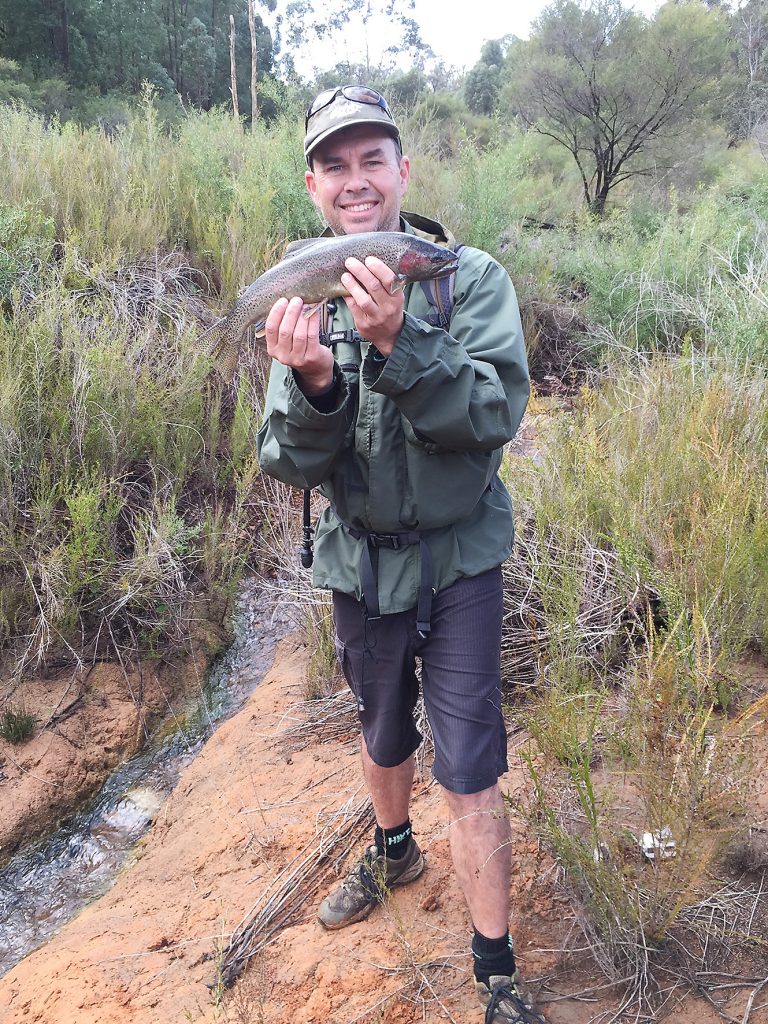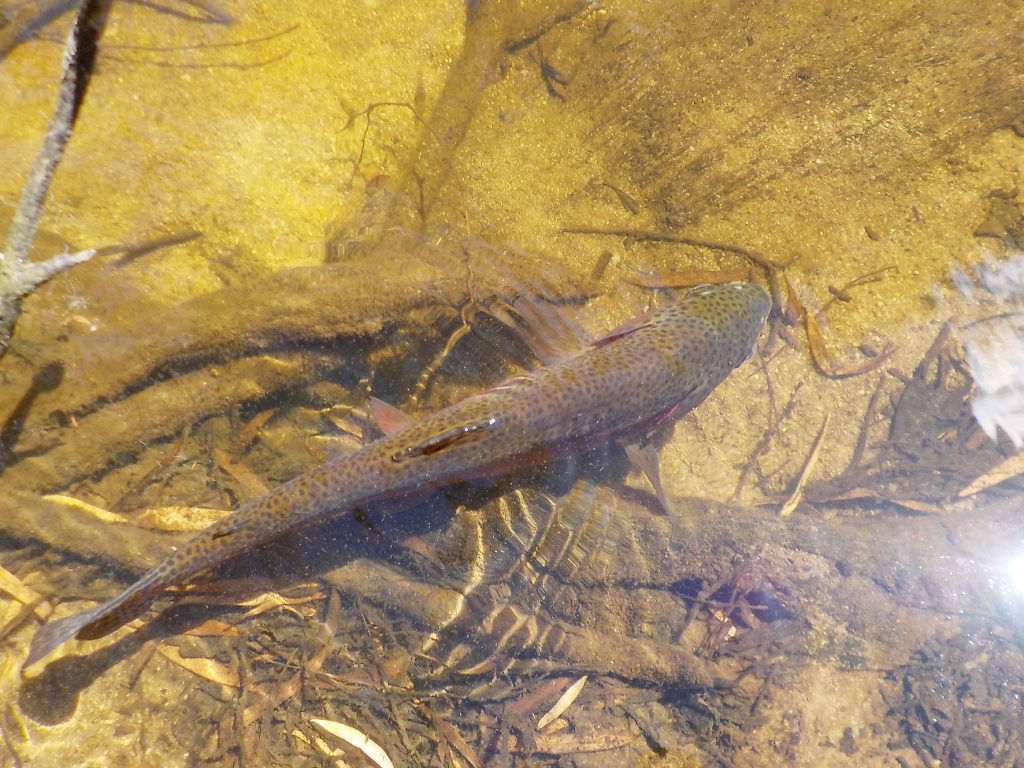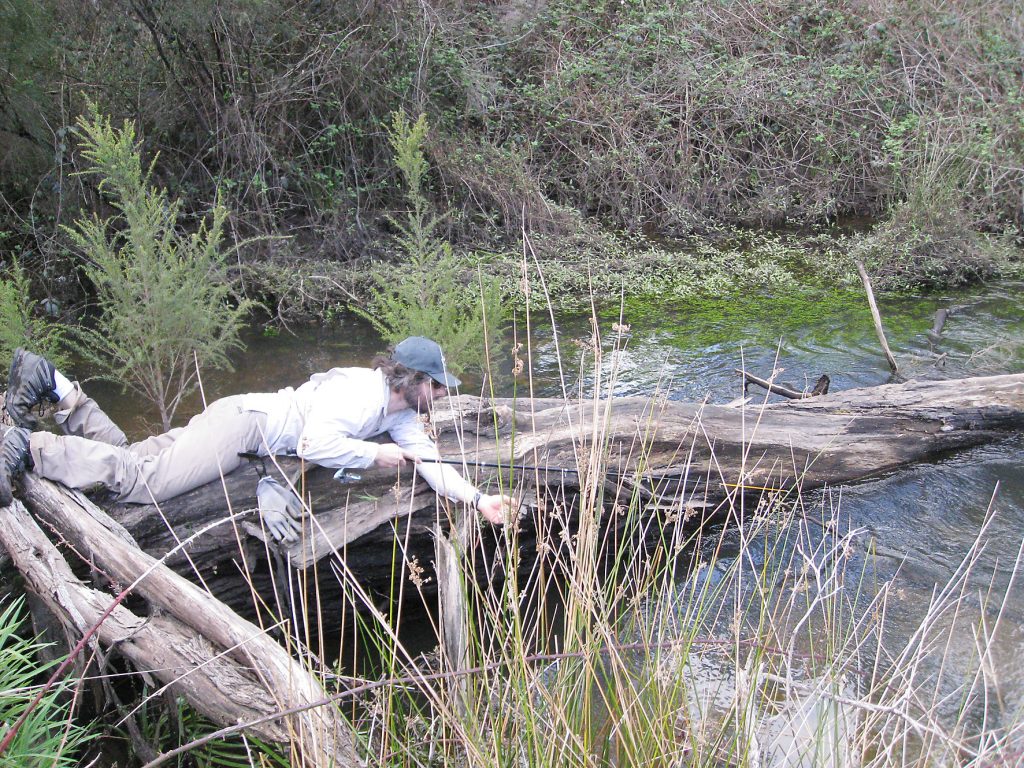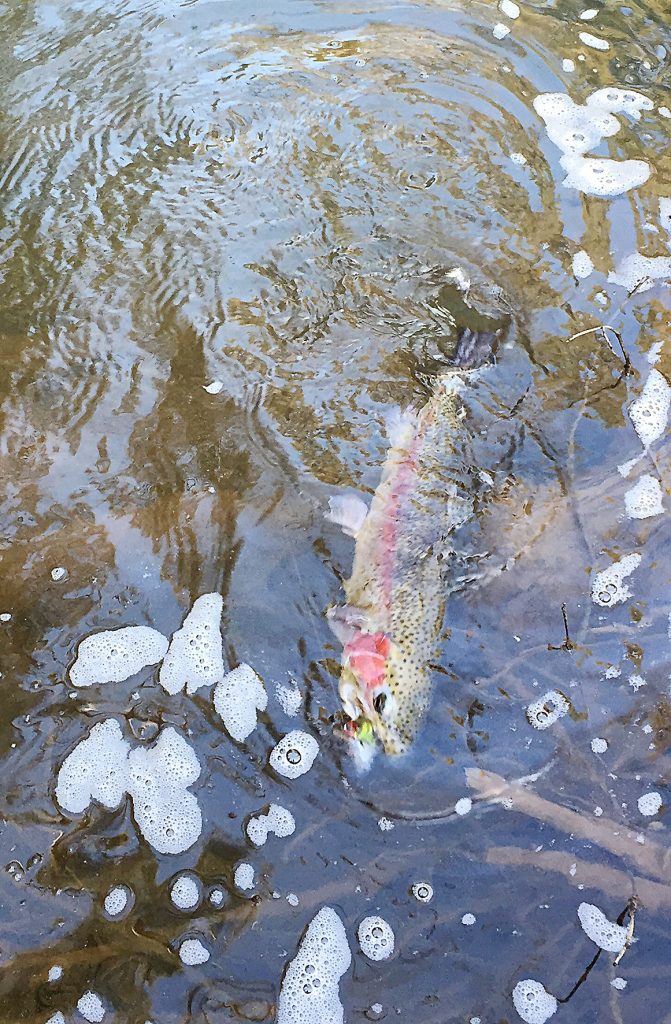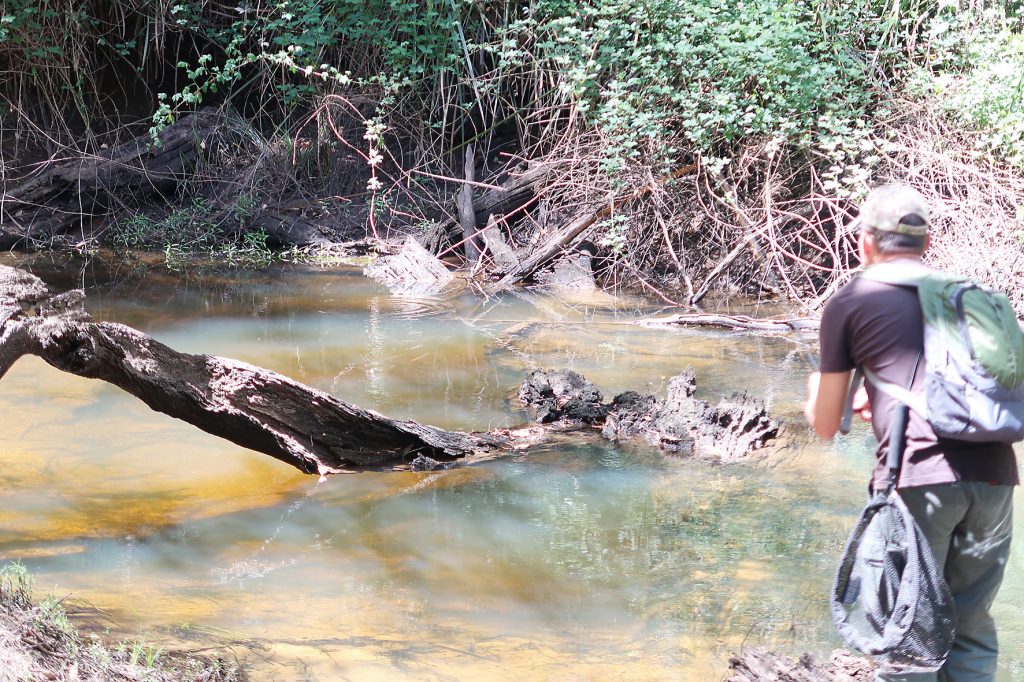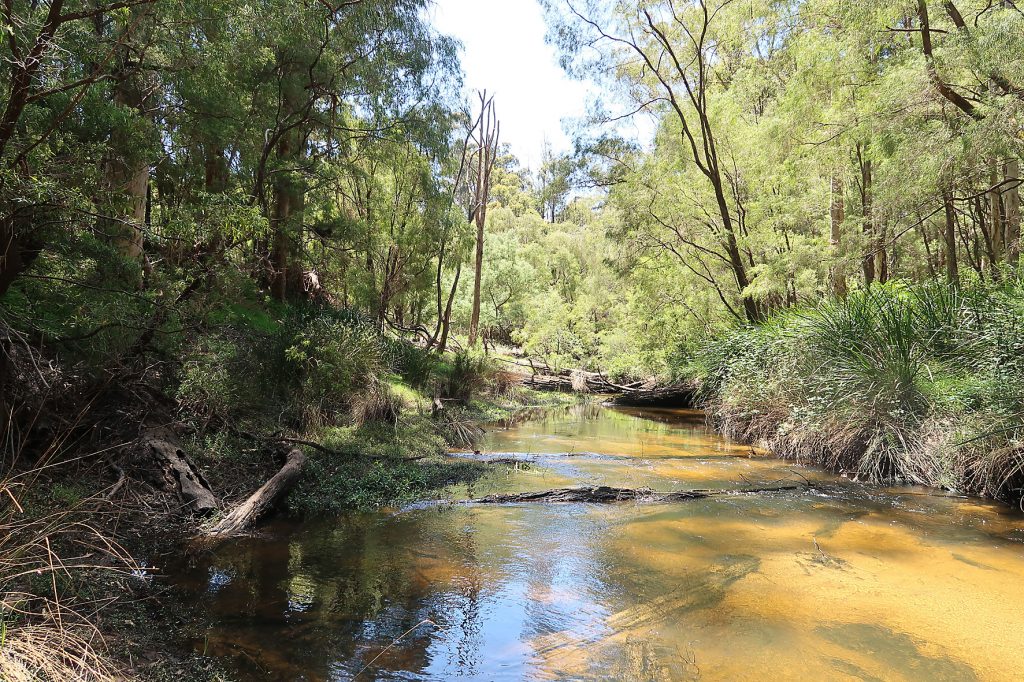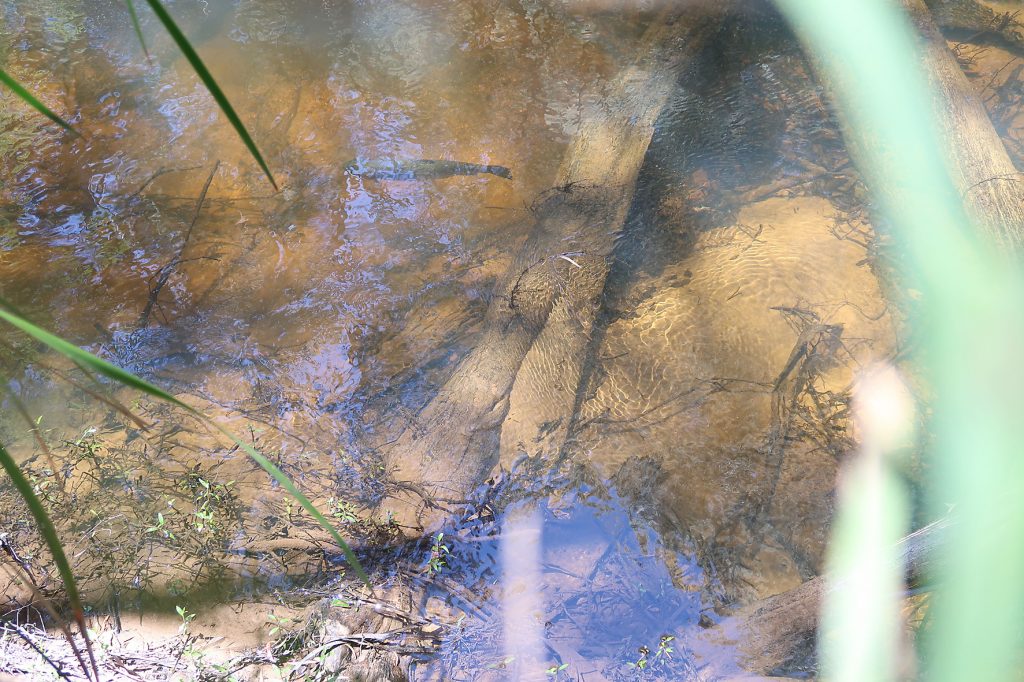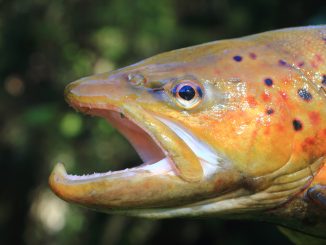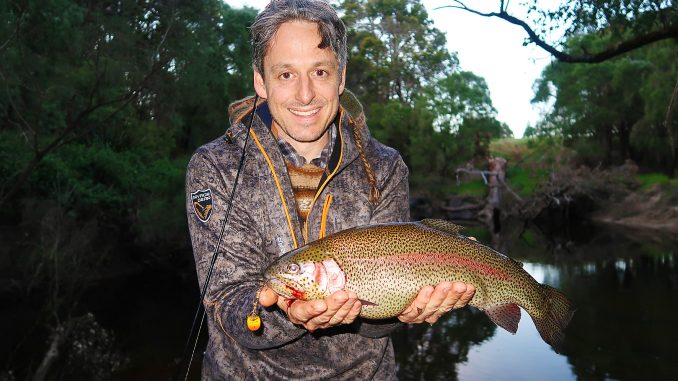
by Kurt Blanksby •
It’s hard to contain the excitement when arriving at the stream or river that you know contains some good trout, and against everything that I have learnt, I still often manage to spook the first few good fish of the season before I actually slow down and think about what I am doing.
WA has some amazing trout waters. Sure, they are tough to negotiate, as they often wind their way through dense forest and are heavily overgrown, and many of our trout manage to go their whole lives never getting bothered by anglers, but if you think they are careless, think again!
Most of us manage to trick a few into taking a lure or fly, but if you want to elevate yourself above the everyday angler and really start to become successful at fooling these wary fish, then it’s time to evaluate your methods.
Think about your approach
Generally, trout will face up into the current where food is swept down past them to inspect, but just be aware in slower pools or quieter stretches that they will actively search for food, often drifting down current then turning and making their way back up.
The general rule that you should fish a section of river by starting downstream and heading up to stay behind the vision of any fish is true, but be very aware that not all fish will be facing into the current.
Many locations will actually only allow you to approach from upstream due the nature of the bank-side vegetation or structure, so how do you go unnoticed to any fish facing your you as you approach?
After decades of walking the banks and fishing our South West streams and rivers, I can’t stress enough the first rule of trout fishing, and that is to slow down. Think about each spot well before you approach it and give it some thought to as to where you think the fish might be waiting in ambush or cruising for food. By slowing yourself down, you actually start to process and think about how you will fish it better, whereas just rushing in to fire a cast cuts your chances of success dramatically.
If there is no safe way to approach from downsteam, then the next thing you must consider is getting close enough to the water to fish without being detected. Trout have excellent vision and any large object moving in their field of view both in and out of the water spells danger.
A low approach is a must, so that means getting down on hands and knees if there’s no bank-side vegetation, rock or log to hide your silhouette above the skyline. From here you must go slow, really slow, so that there are no sudden movements and you seem to just blend in with the surroundings.
It goes without saying that you should also be wearing dull coloured clothing, as a bright red and blue jacket might look stylish, but it doesn’t belong anywhere near a trout steam. You need to go dull, dark and be mindful that even your face and hands will contrast against the surroundings.
Believe it or not trout also manage to pick up on loud noises like the thud of you jumping off a log onto a rock near the river, and shouting out to your mate that “there is a good fish here” will not only alert your mate, but also the fish you are trying to catch. Keep your voice low, climb down gently close the river or stream, and again, slow down.
Sight fishing
Polaroid sunglasses are a must, as actually spotting your quarry before you cast will increase your chances of success massively. It pays to actually sit back and watch the water in the spot you are about to fish, take your time and just see if you can locate any trout before you cast. If you do spot one, then again, take time to sit back and observe it for a short while, and see if the fish is holding in one spot or moving about looking for food.
If the fish is holding location, then do your best to get downstream behind it and cast so your fly or lure passed the fish in the most natural way. Although I have caught many trout winding a lure upstream past them, their food doesn’t naturally do this, so really wary fish will often spook and shy away from your offering.
If the fish is cruising around a quieter section of water, then be patient and wait for it to swim past you and away from you before casting well in front of it. I have had numerous fish slowly cruise past me at very close range while I froze dead still, and the only thing moving was my eyes as I watched it glide past unaware I was there.
Once you have cast and the fish has locked onto your moving lure or fly, you need to be very conscious of how much body movement you make, remembering that although it has spotted what it thinks is an easy meal, any distraction in the corner of its eye will send it bolting well away from you and your cast. I have had big trout follow a lure right up to the rod tip but not take it, which is very frustrating, but it is critical that you don’t let the fish know you are there. If your lure or fly runs out of water and is almost at the rod tip then just keep very still until the fish loses interest and turns away. If the fish suspects anything dangerous, it will be gone.
Often they are not sure and just continue back to their feeding spot, allowing you to either have another cast or change offerings. I remember one big rainbow followed my lure eight times back to my rod tip only to aggressively attack it on the ninth cast! I suspect it was just not sure what the lure was and out of annoyance if finally gave in. The fact that every time it followed it came within a meter of me without spotting me was remarkable.
If you get a follower the only part of your body moving is the hand winding the reel or stripping the fly line, every other part of you must stay completely still. Even turning your head or moving the rod away too fast will usually be enough to spook them.
Getting a cast in
You are often fishing from an uncomfortable and crouched position, and rarely do you get the luxury of standing up and easily fishing. This also goes for casting, and if you can’t cast accurately from a backhanded and kneeling position then you had better start practicing. Rarely will you be in a spot where an easy cast is all that is needed, so often it will require you to put your lure in a tiny spot under overhanging branches with only a flick of your wrist.
One trick that I like using that is very effective is to use a floating lure or fly and allow it to drift downstream past the fish or location you think the fish will be, then bring it back up current past the fish. It’s hardly ideal, as often any fish will inspect your offering as it drifts over them and be a bit wary from that point on, however if there is no other option this method will serve you well and allow you to hook fish in spots most others wouldn’t be able to fish.
Thinking about tackle
Quality tackle also pays off, especially with rods be it fly or spin, as they allow you the accuracy and crispness you need to effectively put your lure or fly where you want it to go. Having a sloppy old fibreglass rod will cut your accuracy down way too much, even if it is better at bashing through the scrub with. On that note, I have broken expensive fishing rods while trying to move through dense vegetation. It is a very real risk, as modern graphite doesn’t always win battles with blackberries and tea trees easily.
When crawling through the scrub, I find that you are best facing your rod backwards and crawling through the undergrowth to the water with the butt going first, and the rest of the rod will follow the path without getting caught. I use to like short rods for this purpose, but have since changed my mind as longer rods allows me to reach through windows in the scrub to drop a lure or fly into the water without casting in some locations.
Longer rods also allow better control of hooked fish, and cushion the jumps and lunges that often shake free the hooks. Speaking of hooks, you need to make sure they are sharp and in good condition. The only problem with this is that they will easily snag up on anything they touch, but trust me, there is nothing more frustrating than a fish hitting your offering and the hooks not taking hold.
Retrieving tackle
If you snag a lure or fly you have a few options, one is to break it off and kiss it goodbye, which is sometimes your only option.
The second is to wade in or swim and retrieve the snagged hooks by hand. Now this can be dangerous, as slippery rocks and fast-flowing cold water can cause you to lose your balance and end up in a potentially hazardous situation. You could also end up with sharp hooks in your hand when you try to free them. Calm shallow spots are easy and often the lure or fly can be reached with the rod tip to dislodge it, but take care in any of the rocky and fast flowing sections.
The third option is a tackle back retriever, and these are relatively cheap weighted objects that slide down your line and are connected to a cord or light rope. Once they hit the snagged lure they either knock it free or grab it allowing you to pull it free with only bent hooks to worry about.
Safety
On the note of safety, keep in mind that many of the South West trout rivers and streams are favourite haunts of snakes, especially tigers, which are very slow at moving away, especially if they haven’t heard you approaching (remember you are going really slow and could be on your hands and knees). Keep an eye out in front of you and don’t just go over any logs or through thick grass without looking first. Generally, tigers are all bluff, they might flatten their heads and look all alarmed, but will move off once they know you are not going to grab them. In fact, unless you actually touch them there is little chance they will bite. It can be hard to do, but if you do find yourself way too close to a snake then just keep still, don’t move and it will usually move away from you.
On that note, it pays to never fish alone, which brings me to the next issue on who you take with you. We all have lots of friends who love coming fishing with us, but if you are with someone who just can’t keep quiet and rushes into every spot without slowing down you probably won’t catch very much. Having a pep talk before you head off or in the car on the way down is a start, then take control when you get there. Be sure to tell them to slow down and let them watch you approach a spot and fish – it’s amazing how others soon learn the art of fooling these fish.

